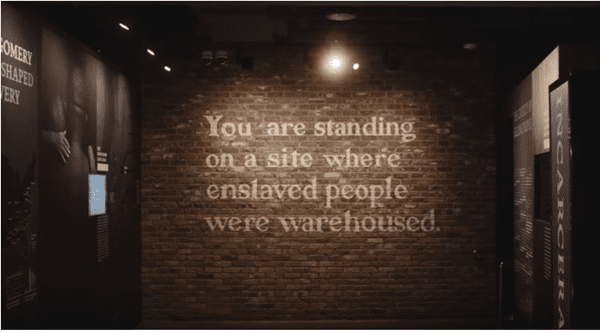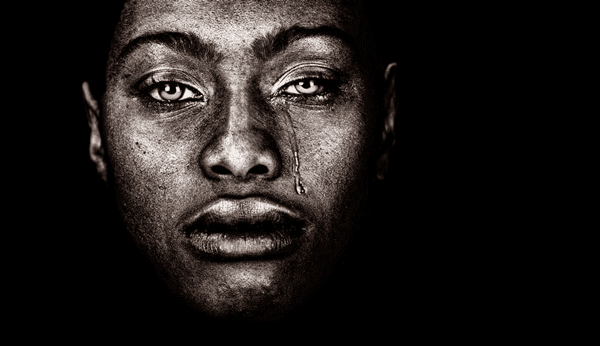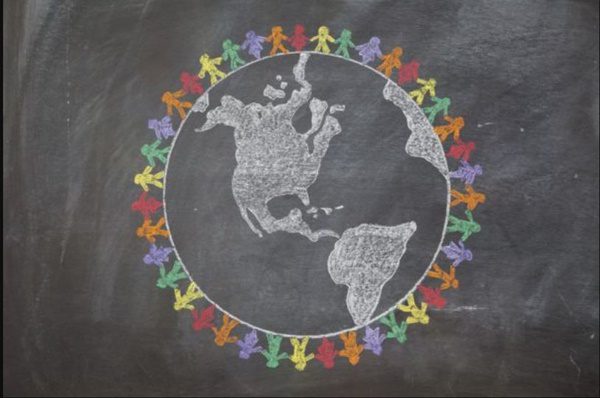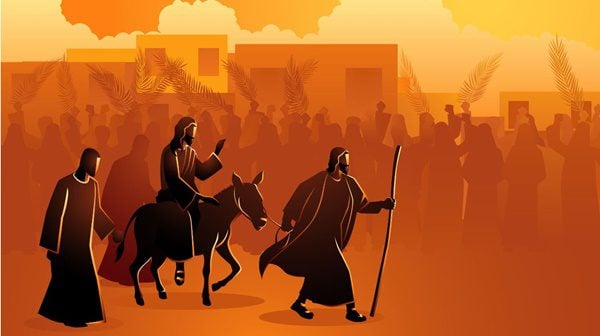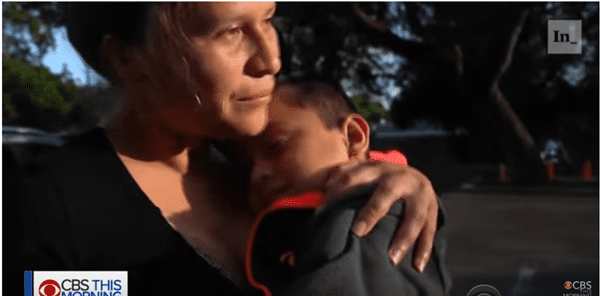Jesus then asked him, “What is your name?” He said, “Legion”; for many demons had entered him.
This week’s Gospel reading, Luke 8: 26-39, follows a week that included Juneteenth. We know the Spirit is crying out to us when the story of the Gerasene demoniac falls so close to the anniversary of the partial and incomplete exorcism of our nation’s original sin of slavery. At a time when Congress is debating whether or not to even study reparations for slavery and segregation, a two-thousand-year-old story of an occupied nation, a man tormented by internalized violence and suffering, Love-enfleshed who calmed the storm within, and a town terrified of change can speak volumes to us today. Let’s look closely at the story of the Gerasene demoniac with our eyes open to the hope of transformation and healing, mindful of the ways fear can hold us back, but with the courage to listen and act upon the truth as the Spirit reveals it to us.
Calming the Raging Storm Within
Jesus has just come from calming a storm on the Sea of Galilee only to confront another raging storm distilled into a single person. There is a man possessed by demons, naked and living amongst the tombs. He is kept under guard with chains and shackles, which he regularly breaks with violent convulsions. When Jesus asks the name of the demon who resides within him, the answer comes back, “Legion.”
The man is living under the occupation of the Roman Empire. So, too, are the townspeople, who don’t appear to be possessed by demons. But generations of war, captivity, and exile, with brief reprieves only to be conquered again, have shaped the lives of the people. The demoniac has probably suffered more than most. His life may have been shaped by loss of home, loss of loved ones, pain and suffering and violence that has seeped into his skin and taken hold of him from the inside-out. Yet all have suffered something. The whole town needs healing from the violence that has circumscribed their existence and shaped their collective memories and culture.
Jesus, though also living under Roman occupation, represents an existence unbound by the violence and dehumanization that plague this man. He does not live trapped in a world of over-and-against, where identity is found in conquest or defeat. In a world where storms of violence rage and tear people and communities apart, Jesus finds himself on an unwavering foundation that lets him step out onto raging waters and reach out to tormented souls. He lives not in rivalry against others but in full communion with Love. Love exudes from Jesus and reaches out to this man, casting out the fear, suffering and pain that had tormented him.
Legion, the embodied damage of generations of violence, begs not to be cast into the abyss of fear and anger and hatred from which they generated. So Jesus casts them into a nearby herd of pigs, whereupon they rush over a cliff and are drowned in the abyss anyway.
I always felt sorry for the pigs, but as Dr. Anthony Bartlett writes in Virtually Christian points out, “If we think of the thousands upon thousands killed in military actions in that area alone and then, expanding from there throughout history, the pigs are simply an anthropological code for the immense violence of humanity that always seeks to displace itself in a surrogate.” In other words, without a scapegoat, without a demoniac against whom the town could measure their own worth, the violence in which they all lived would have consumed them too, as it consumed the pigs. The demoniac had served to remind the people that things could always be worse, that at least they weren’t as bad as the raving lunatic chained up among the tombs. When the demons were displaced into the pigs, the town saw what could happen to them now that the pain and suffering which weighed upon them no longer had an outlet. No wonder they were terrified and asked Jesus to leave!
Juneteenth and Exorcising the Demon of Slavery
My thoughts shift to Juneteenth and the town of Galveston, Texas. Slaves had legally been freed in the rebellious states with the Emancipation Proclamation two and a half years prior. But, of course, the Confederacy, not recognizing President Lincoln’s authority, clung to their slaves. Yet by Juneteenth, the war had been over for two months, and thus the Confederacy was no more. The slaves should have been free, but no one had told them so. They should, of course, have been free from the beginning; their humanity should have been recognized from the outset. True freedom is rooted in the Love from whom we come, but lies of demonization and division bind us all. The slaves of Galveston were bound not by law but by human hatred and fear. They were bound by a lack of creative and compassionate imagination. They were bound by those who didn’t know how to live without scapegoating – enslaving and exploiting – others. The disease of white supremacy, an embodiment of violence, bound the whole town, but some chains are more literal than others.
But on June 19, 1865, Major General Gordon Granger of the Union army gave General Order 3, which reads as follows:
The people of Texas are informed that in accordance with a Proclamation from the Executive of the United States, all slaves are free. This involves an absolute equality of rights and rights of property between former masters and slaves, and the connection heretofore existing between them becomes that between employer and free laborer.
As suddenly as the demons were expelled from the Gerasene man, official slavery was finally expelled from the last hold-out of the Confederacy. With liberation came jubilation, even as life remained uncertain. It would be another three years before the former slaves would be nominally granted the rights of citizenship with the passage of the 14th Amendment. With no guarantees and a precarious road ahead, many former slaves headed north in search of long-separated family or simply a new life away from the trauma that surrounded the town that had kept them bound.
Integration as Liberation
Leaving home, however, was not an option for the liberated former demoniac. He longed to follow Jesus out of the place that had tormented him for so long, but Jesus said “No.” Rather, he charged the man to proclaim what God had done for him.
Was this cruel of Jesus, to insist that the man remain among the very townspeople who had kept him in chains? I know if I were that man, I would want to leave too. But Jesus knew that this man’s liberation from demons was only the very beginning. The whole town was possessed by a mindset of violence that had come from living in a world of violence. They needed to see what it meant to be freed from the torturous death throes of fear, anger, pain and suffering. The town needed testimony to the power of Love to inaugurate a new way of life. This man, whom they had seen as the last and least among them, would now be the first fruits of Love. And through this liberated man, who sought no vengeance because he was free of pain to pass along to others, the town could be exorcised of its own demons and learn how to care for one-another so that, even in the midst of the storm of Roman violence surrounding them, they could find peace.
In seeing the man they had demonized walk free from chains, agony, and the judgment that had equated him with a monster, the townspeople could become free of their own demons. Their liberation would depend on whether they recognized his full humanity and how they welcomed him back among the community. But we do not see that in this story. We do not know how their story ends. We can only have a say in how our own story will proceed.
Making Peace Means Making Reparations
Slavery has officially been over for 154 years, but the demonization continues. The exorcism of the original sin of the United States is incomplete. The long shadow of slavery, Jim Crow, segregation, and the prison-industrial complex looms over our nation.
Jesus sent the man freed from his demons to reintegrate into his society, but full integration of African Americans has been blocked over generations – by black codes and vagrancy laws, by lynching, by redlining and housing discrimination, by segregated schools and denied access to higher education and employment, and now by a criminal justice system that disproportionately targets African Americans for arrest and sentences them to longer prison terms than their white counterparts. While laws have changed (although not enough, and some changes, like the Voting Rights Act, have been rolled back), generations of impediments to progress leave lasting damage. As Ibrahim X. Kendi explains, “For every $100 of wealth that white families hold, black families hold just $5. … The racial wealth gap will not repair itself. And it is growing.” The wealth gap, as well as the gap in experience and treatment, amounts to de-facto segregation, a society divided along racial lines among others. A nation born from the deliberate scapegoating of darker-skinned people that went on to amass great wealth at their expense has a gaping wound at its core that cannot be healed without deliberate action.
Until reparations heal the wound at the heart of our nation, we all live our lives circumscribed by violence and injustice.
I do worry, however, that if reparations are seen only as a transfer of wealth from white people to people of color, resentment will grow and any progress may be short-lived as inevitable backlash occurs. Thus, reparations should be viewed not through a lens of violence, as over-and-against taking, but as an investment in reconciliation and the healing of our nation. It will involve money, much of which could come from divesting from dehumanizing wars abroad to invest in peace and in people. But beyond money, reparations put renunciation of the national original sin of white supremacy into action. They acknowledge the damage done to relationships across and within racial boundaries on so many fronts, and dare to put in the deliberate care, compassion, and imagination needed to repair those relationships. Reparations involve listening to understand problems, implementing proven solutions, and searching for new solutions that center people over profits. They focus not only on closing wealth gaps, but on dissipating fear and building friendship.
Reparations are the work of building foundations of respect and cooperation that can calm the storm of racial tensions. For Jesus was able to calm the storm raging on the waters and the storm raging within the demoniac because he was grounded in Love. Reparations are that love in action. If we are to transform our nation from scapegoating and exploitation into beloved community, we need to tend carefully to the wounds that have festered and deepened for so long. And when we have the courage to say that our healing is worth the cost in time, imagination, and treasure, when we can recognize that the price of continued division is tearing us apart while an investment in healing is what it will take to make us whole, then a new force beyond what we can yet imagine will begin to emerge. An investment in reparations is an investment in peacemaking, in grounding our identities in the community we build together rather than the false divisions that diminish us.
Let us find the courage to repair what is broken, cast out the demon of white supremacy once and for all, and see what a beautiful new world we can build together.
Image: Screenshot from Youtube: “Pain and Terror: America Remembers Its Past,” by The Guardian.

